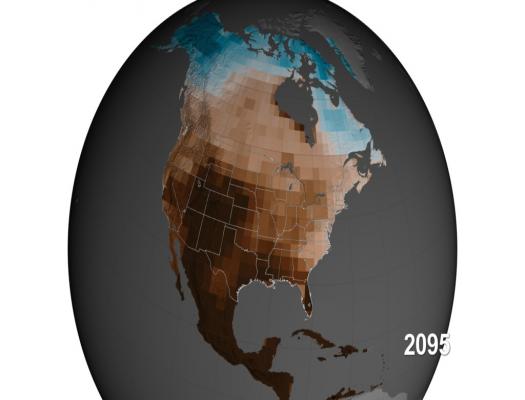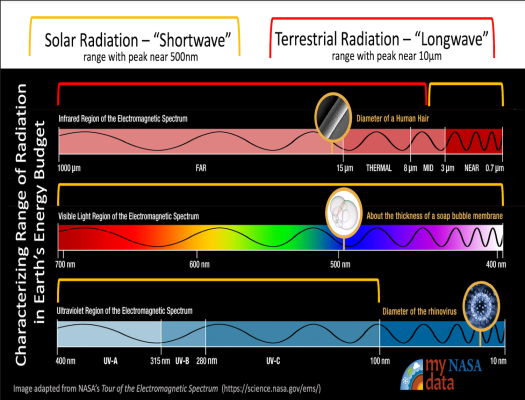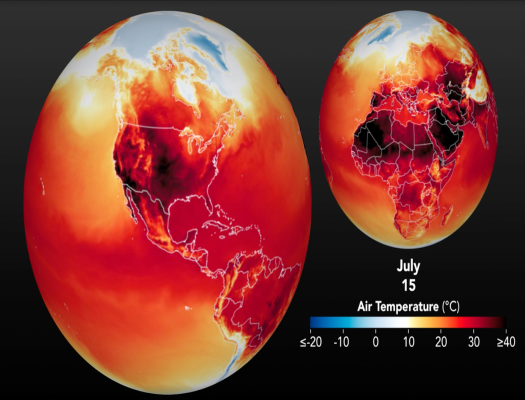Any system within the Earth system is considered an open system. Because energy flows freely into and out of systems, all systems respond to inputs and, as a result, have outputs. For example, water and chemicals, as well as energy enter and leave the boundaries of a watershed system. Outputs from one part of the system are inputs for another part. This linked output-input connection is often called ‘feedback’. The inputs and outputs are important for understanding the dynamics of the system you are studying as these are the key for helping us identify one system from another.
>> Read More >>
Just one moment,
loading Earth as a System...
Featured Mini Lessons
-
-
-
-
-
-
-
Grade Level: 6-8, 9-12
Students watch a visualization video and answer questions on the potential of increasing megadroughts in the southwest and central United States from 1950-2095 using models created by soil moisture data.
Grade Level: 6-8
Students review a video that models the global impact of smoke from fires to develop an understanding of how models can be used to interpret and forecast phenomena in the Earth System.
Grade Level: 6-8, 9-12
This mini lesson provides a video on an ultra-high-resolution NASA computer model of how carbon dioxide in the atmosphere travels around the globe. Students will review the video and answer the following questions.
Grade Level: 6-8, 9-12
Students watch a NOVA PBS video about the different effects of clouds on climate and Earth's energy budget. Then they answer questions and brainstorm to complete a flow chart of events that might occur if the percentage of absorbing clouds increases.
Grade Level: 6-8, 9-12
Students watch a short video to gather information about sources of methane emissions and then extend their understanding of these sources to evaluate monthly trends in the Alaska region, ultimately making connections to Earth’s energy budget.
Grade Level: 6-8, 9-12
Using an infographic, students describe differences in electromagnetic radiation that is part of a model of Earth’s energy budget by applying the defined terms of Shortwave Radiation and Longwave Radiation.
Grade Level: 6-8, 9-12
By investigating the data presented in a model that displays extreme summer air temperatures, students explain energy transfer in the Earth system and consider the impact of excessive heat on local communities.
Previous
Next
Grade Level: 6-8,
9-12
Students watch a visualization video and answer questions on the potential of increasing megadroughts in the southwest and central United States from 1950-2095 using models created by soil moisture data.
Grade Level: 6-8
Students review a video that models the global impact of smoke from fires to develop an understanding of how models can be used to interpret and forecast phenomena in the Earth System.
Grade Level: 6-8,
9-12
This mini lesson provides a video on an ultra-high-resolution NASA computer model of how carbon dioxide in the atmosphere travels around the globe. Students will review the video and answer the following questions.
Grade Level: 6-8,
9-12
Students watch a NOVA PBS video about the different effects of clouds on climate and Earth's energy budget. Then they answer questions and brainstorm to complete a flow chart of events that might occur if the percentage of absorbing clouds increases.
Grade Level: 6-8,
9-12
Students watch a short video to gather information about sources of methane emissions and then extend their understanding of these sources to evaluate monthly trends in the Alaska region, ultimately making connections to Earth’s energy budget.
Grade Level: 6-8,
9-12
Using an infographic, students describe differences in electromagnetic radiation that is part of a model of Earth’s energy budget by applying the defined terms of Shortwave Radiation and Longwave Radiation.
Grade Level: 6-8,
9-12
By investigating the data presented in a model that displays extreme summer air temperatures, students explain energy transfer in the Earth system and consider the impact of excessive heat on local communities.
Systems and Systems Models landing page. Explore maps, graphs, data, and related education resources. These resources include lesson plans, mini lessons, activities, and datasets for teachers and students.


















